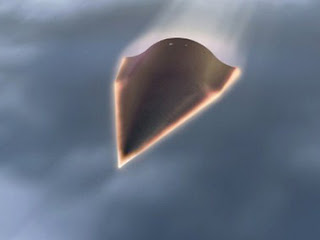Russian rocket artillery troops have equipped Iskander missiles with a
terminal guidance system using photos of the target to greatly improve
precision. The tactical ballistic missiles are Russia’s answer to NATO’s
controversial European ABM shield.
The upgraded missile designated 9M723 for the Iskander system was tested last week by an artillery use and research center, reports Izvestia newspaper citing a source in the General Staff.
“The guided missile is homed ‘by photo’, that is compares the actual view to a pre-loaded digital image of the target,” the source explained.
The technology is similar to Pentagon’s Digital Scene-Mapping Area Correlator (DSMAC). In the case of the Iskander it helped improve the missile’s accuracy twofold. The versions currently deployed have Circular Error Probable (CEP) of 10 meters, while for the new missile it was lowered to merely 5 meters.
The improved precision makes the Iskander more efficient against highly fortified underground targets, the source says.
Iskander is a mobile theater-level ballistic missile system. It is a designated replacement for the older Tochka missiles, which had been deployed since 1970s. The first brigade armed with the missiles was formed in October this year. A total of 120 Iskander launchers are to be deployed by Russia by 2020.
The missile can be armed with different loads, including tactical nuclear warheads. Its estimated maximum range is 280 kilometers. An Iskander launcher can also potentially fire cruise missiles.
In 2008 amid the heated dispute over American plans to deploy an Antiballistic Missile system (ABM) in Eastern Europe, President Medvedev threatened to deploy Iskanders in the Russian western exclave, the Kaliningrad Region. It would allow for the attack of ABM sites in Poland and Czech Republic, which were to become part of the system.
source RT
The upgraded missile designated 9M723 for the Iskander system was tested last week by an artillery use and research center, reports Izvestia newspaper citing a source in the General Staff.
“The guided missile is homed ‘by photo’, that is compares the actual view to a pre-loaded digital image of the target,” the source explained.
The technology is similar to Pentagon’s Digital Scene-Mapping Area Correlator (DSMAC). In the case of the Iskander it helped improve the missile’s accuracy twofold. The versions currently deployed have Circular Error Probable (CEP) of 10 meters, while for the new missile it was lowered to merely 5 meters.
The improved precision makes the Iskander more efficient against highly fortified underground targets, the source says.
Iskander is a mobile theater-level ballistic missile system. It is a designated replacement for the older Tochka missiles, which had been deployed since 1970s. The first brigade armed with the missiles was formed in October this year. A total of 120 Iskander launchers are to be deployed by Russia by 2020.
The missile can be armed with different loads, including tactical nuclear warheads. Its estimated maximum range is 280 kilometers. An Iskander launcher can also potentially fire cruise missiles.
In 2008 amid the heated dispute over American plans to deploy an Antiballistic Missile system (ABM) in Eastern Europe, President Medvedev threatened to deploy Iskanders in the Russian western exclave, the Kaliningrad Region. It would allow for the attack of ABM sites in Poland and Czech Republic, which were to become part of the system.
source RT

